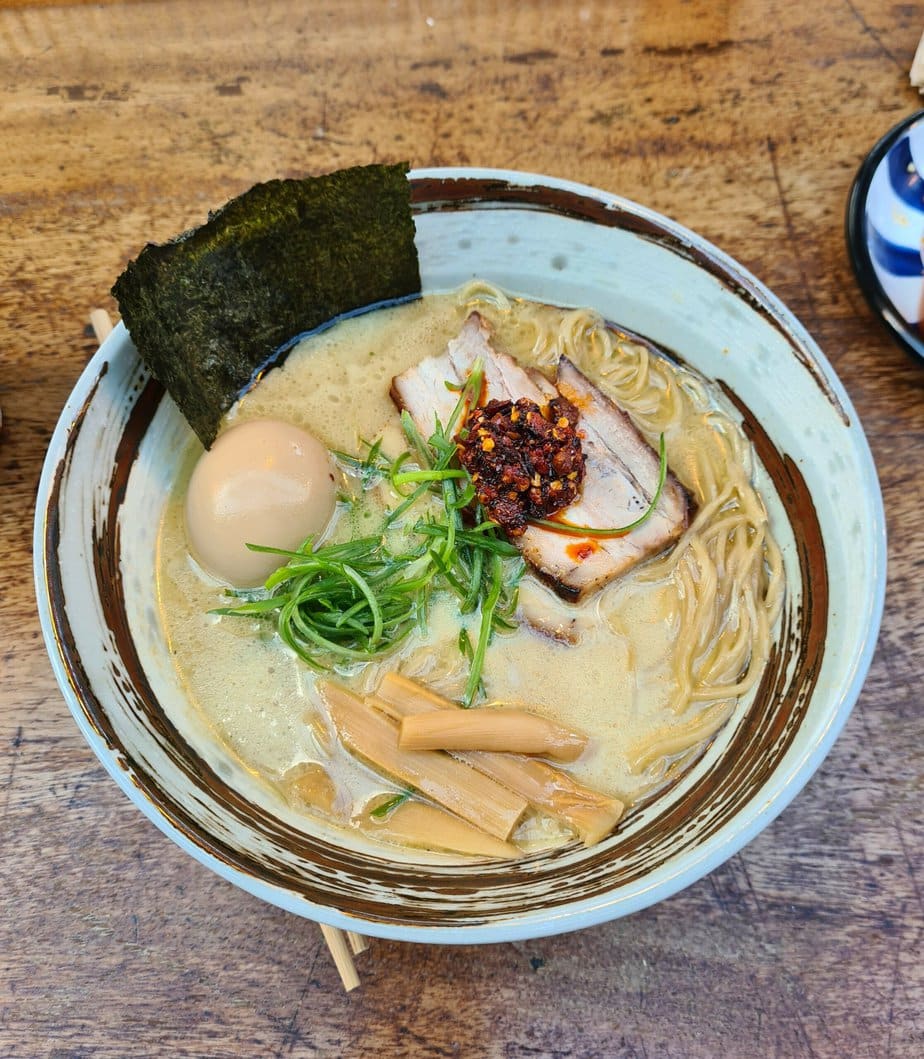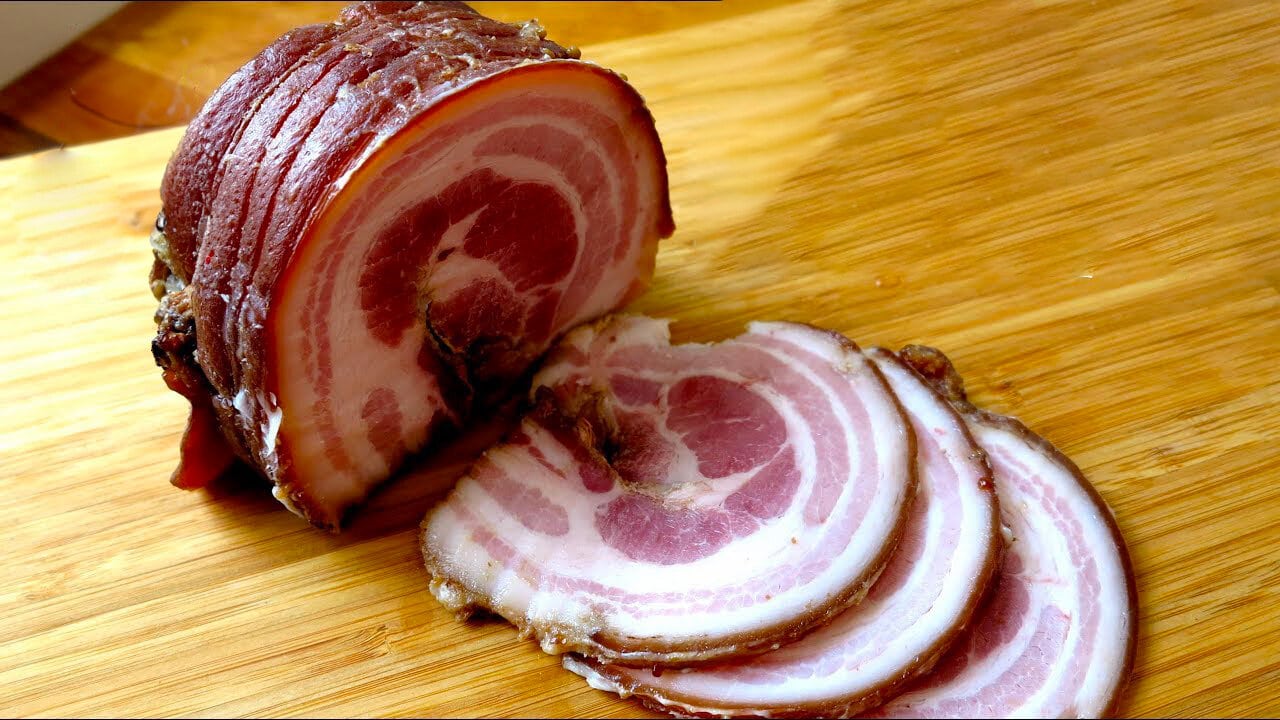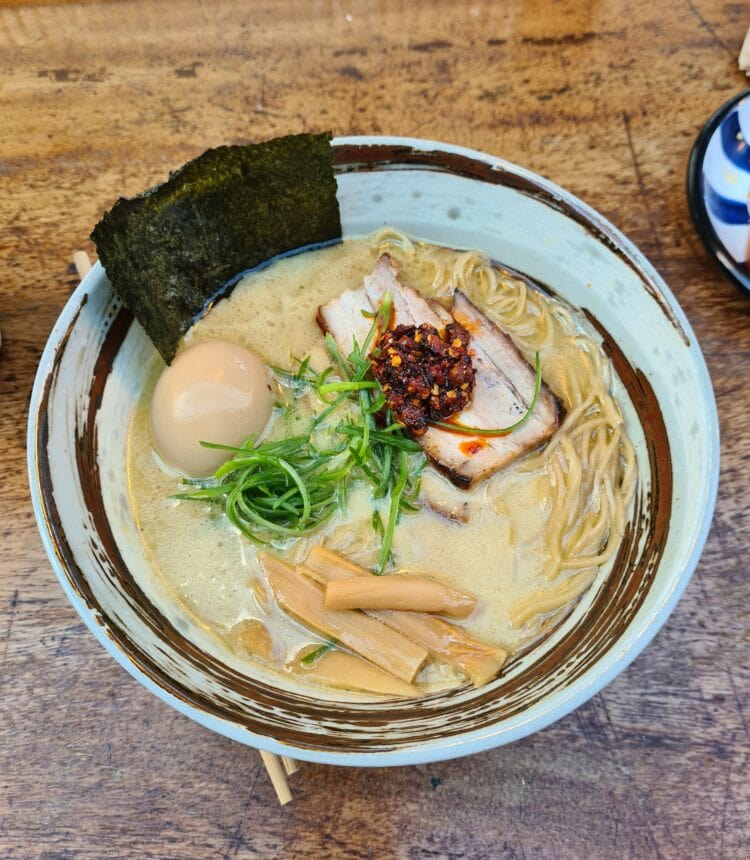What is Paitan broth?
Paitan, a word derived from Chinese, refers to a “white soup” in culinary context. This term is specifically associated with varieties of Japanese Ramen whose broth is cloudy, milky, and opaque. It’s important to note that a “pure” white color is not an absolute necessity for a broth to be considered Paitan.
This characteristic appearance comes from the emulsion of fats with the gelatin from bones traditionally used to prepare the broth.
This process gives the broth a rich texture and creamy appearance, making it a flavorful and distinct base for many Ramen dishes. Combined with the right tare, it’s a guaranteed taste orgasm.

The art of emulsion in ramen broths
Emulsification, though simple in appearance, is a complex science that plays a key role in preparing Ramen broths. It involves suspending two insoluble liquids in each other, creating tiny droplets through a process called shearing.
This technique requires the right compounds and precise liquid manipulation. Paitan and Chintan broths perfectly illustrate this difference: Paitan are emulsions, making the soup cloudy, while Chintan are not, leaving the soup clear. The emulsified fat in Paitan broths refracts light differently from water, which explains their milky appearance.

Emulsification techniques: the gelatin method
Cooks use various tools and techniques to emulsify fat in broths. Gelatin, as an emulsifier, is particularly important because it keeps the fat emulsified, allowing droplets to remain suspended.
It acts as a bridge between fat and water, repelling other fat droplets and preventing them from combining. Two common methods for creating this emulsion are
- Rapid boiling, which shears the fat into tiny droplets
- Using a blending device, which can accomplish the same emulsification more quickly
How to cook ingredients for Ramen
Here is a generalized table showing the cooking time for each ingredient to correctly extract the gelatin

Basic protocol for a Paitan style Ramen broth
A formal recipe using the principles described in the article will come, but I wanted a dedicated article giving a “generalized” protocol for this type of broth

Paitan-style Ramen Broth
Ingredients
- Animal parts such as chicken backs, pork neck bones, femurs or other bones and offal of your choice
- An equal amount by weight of water
- Aromatics garlic, onion, …
Instructions
- Submerge the bones/offal in the water. If using pork bones, you can soak them overnight to remove some of the myoglobin.
- Heat on high until the pot starts to boil.
- Skim off the scum that rises to the surface. If using pork bones, you may choose to discard the water and start again with fresh water, bringing it to a boil.
- Continue to boil over medium/medium-high heat for the recommended time depending on the ingredients. Add water to maintain sufficient coverage of the bones (as evaporation occurs during bone cooking).
- In the last hour, add the aromatics and continue to boil. You can optionally crush the contents of the pot to promote emulsification and complete extraction.
- Strain the broth and set aside or cool completely. If not fully emulsified, blend the desired amount of fat into the broth (with an immersion blender, for example) until the desired level of emulsion is reached.

